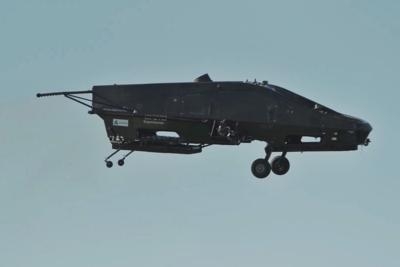Mon, Jan 27, 2020
Will Study Potential Uses For Piloted And Autonomous Light Aircraft
Boeing has signed an agreement with Israel-based Tactical Robotics to explore development of a ducted fan propulsion technology with potential uses for piloted and autonomous light aircraft.

Through a joint working group, the two companies will determine what opportunities may exist in developing, producing and marketing Fancraft-based vertical take-off and landing (VTOL) products, including the Cormorant. Due to its compact, Humvee-sized footprint, Cormorant can conduct emergency response missions such as delivering food, water and supplies during natural disasters or in combat environments. It can also carry up to four patients for medical evacuations.
“The relationship between Boeing and Israel goes back about 70 years, and during that period, Boeing has a long history of working in partnership with Israel’s technical and industrial sectors,” said Dennis D. Swanson, vice president, international sales, Boeing global sales and marketing. “This MoU with Tactical Robotics builds on Boeing’s commitment to developing and investing in innovative technologies that lead to safe, reliable aircraft around the world.”
Rafi Yoeli, CEO of Tactical Robotics’ parent company Urban Aeronautics, said, “Cormorant represents the first in a family of vertical take-off and landing aircraft that can fly and land where no other aircraft can. We can think of no better partner than Boeing to help us develop this product and utilize the Fancraft technology to its full potential.”
Aviation ducted fan technology uses a fan mounted in a cylindrical duct to produce thrust. This arrangement can efficiently enhance airflow velocity and pressure when compared to an open rotor. There are also notional safety advantages to the technology when compared to unshielded blades on traditional rotorcraft. Fancraft technology improves stability, payload, speed and endurance when compared to conventional ducted fan configurations.
(Tactical Robotics image provided with Boeing news release)
More News
He Attempted To Restart The Engine Three Times. On The Third Restart Attempt, He Noticed That Flames Were Coming Out From The Right Wing Near The Fuel Cap Analysis: The pilot repor>[...]
Make Sure You NEVER Miss A New Story From Aero-News Network Do you ever feel like you never see posts from a certain person or page on Facebook or Instagram? Here’s how you c>[...]
From 2009 (YouTube Edition): Leading Air Show Performers Give Their Best Advice for Newcomers On December 6th through December 9th, the Paris Las Vegas Hotel hosted over 1,500 air >[...]
Aero Linx: NASA ASRS ASRS captures confidential reports, analyzes the resulting aviation safety data, and disseminates vital information to the aviation community. The ASRS is an i>[...]
“For our inaugural Pylon Racing Seminar in Roswell, we were thrilled to certify 60 pilots across our six closed-course pylon race classes. Not only did this year’s PRS >[...]
 NTSB Final Report: Rutan Long-EZ
NTSB Final Report: Rutan Long-EZ ANN FAQ: Turn On Post Notifications
ANN FAQ: Turn On Post Notifications Classic Aero-TV: ICAS Perspectives - Advice for New Air Show Performers
Classic Aero-TV: ICAS Perspectives - Advice for New Air Show Performers ANN's Daily Aero-Linx (06.28.25)
ANN's Daily Aero-Linx (06.28.25) Aero-News: Quote of the Day (06.28.25)
Aero-News: Quote of the Day (06.28.25)



